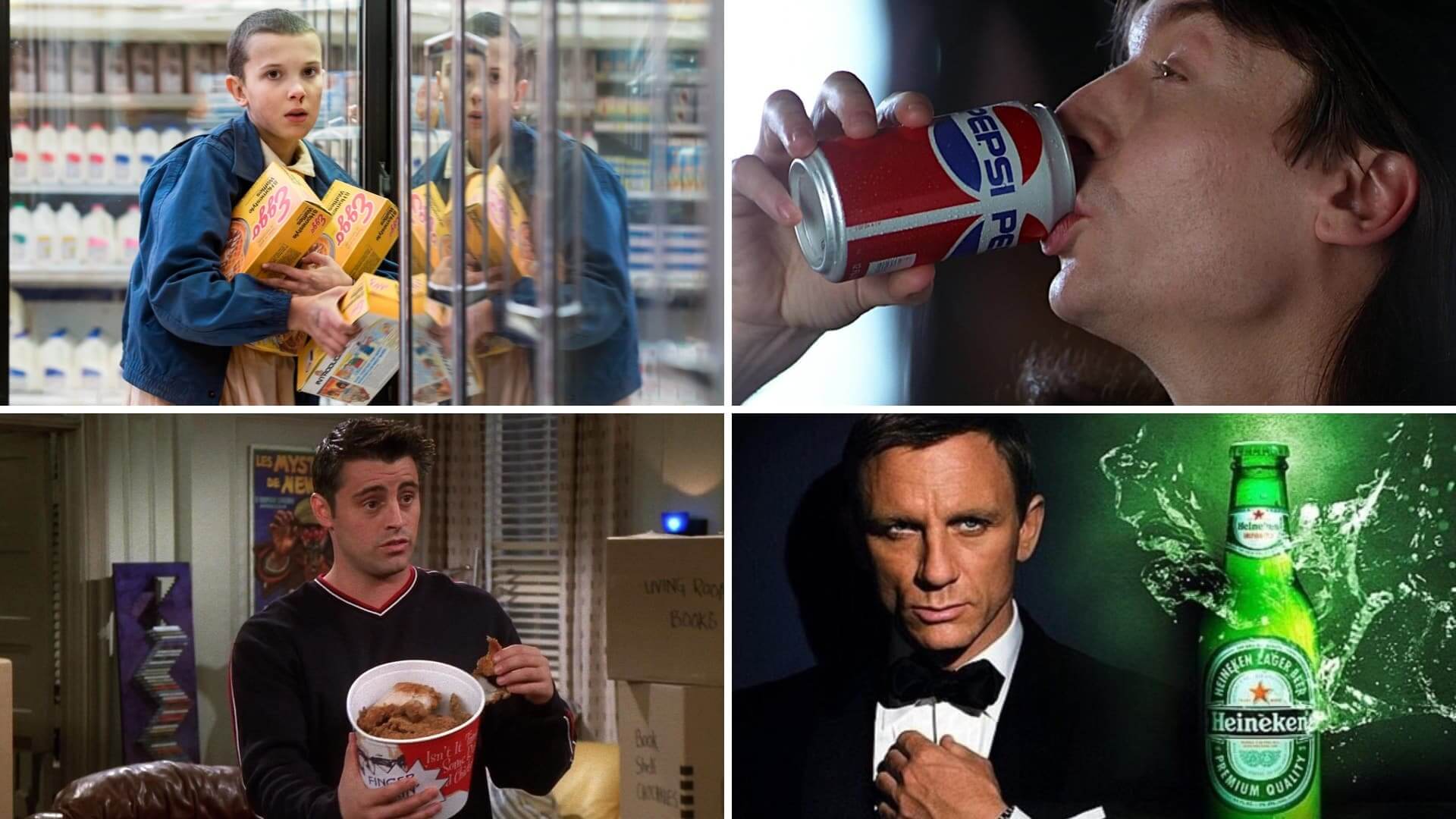Ever noticed how your favorite character in a TV show always seems to be sipping from a certain brand of coffee or how the hero in a blockbuster movie never fails to drive the same flashy car? It’s not by chance.
This is the subtle art of product placement, a marketing strategy so seamlessly woven into our entertainment that we barely even notice it. These placements captivate our attention, subtly molding our perceptions and desires, often without our conscious awareness.
What is Product Placement in Movies?
First, let’s define product placement
The effectiveness of product placement lies not just in its subtlety, but also in the influence exerted by the context or characters associated with the product, playing upon our aspirations and emotions to drive consumer behavior. Let's look at the impact of product placement starting with its definition.
PRODUCT PLACEMENT DEFINITION
What is product placement?
Product placement is a marketing strategy wherein brands strategically position their products or services within entertainment media, ensuring high-visibility exposure to the audience. It's a subtle ploy, designed to integrate the product seamlessly into the narrative, often without the audience's explicit awareness. Done skillfully, viewers or players may perceive the product as part of the entertainment content rather than an intrusive ad. This technique allows brands to reach consumers in a non-disruptive way while associating their products with the positive experiences of the audience's entertainment consumption.
What is Product Placement Used For?
- Boost brand visibility
- Enhance consumer engagement
- Drive purchase behavior
- Increase brand recall and recognition
What Does Product Placement Look Like?
Examples of Product Placement
Product placement, a popular marketing technique, can manifest in different ways, depending on the type of media and the creative approach employed. It involves integrating branded products or services into various forms of entertainment to subtly promote them.
By strategically placing products within the context of the content, advertisers aim to increase brand visibility and create a positive association with the audience.
Television shows like Stranger Things subtly featuring characters using Coca-Cola cans or displaying Nike sneakers in prominent settings.
Stranger Things Product • Placement TV Shows
Movies like The Internship showcasing specific brands like Google through dialogue, visuals, or props.
Video games like Need for Speed incorporating product placements of Red Bull energy drinks into the gameplay or environment.
Music videos like Post Malone's "White Iverson" featuring Rolls Royce cars in the background or as part of the storyline.
Post Malone • White Iverson
Social media influencers like Kylie Jenner promoting products like Kylie Cosmetics through their content.
While product placement has been a marketing mainstay for decades, its application and effectiveness continue to evolve with changing media landscapes.
Studying the future trends of product placement, the potential impact of technology, and its ethical implications will provide a comprehensive understanding of this marketing technique's future trajectory.
The Future of Product Placement
The Evolution of Product Placement
Product placement, a marketing technique that seamlessly integrates brands into various forms of media, has a rich history dating back to the late 19th century such as the inclusion of Coca-Cola in a French novel in 1889. However, it wasn't until the advent of television that product placement became more widespread and an essential part of marketing strategies.
While its origins can be traced to that era, it truly gained widespread popularity in the 1980s and 1990s, coinciding with the rise of blockbuster movies and television shows. As technology advanced, so did product placement techniques, allowing brands to cleverly incorporate their products into the narrative of films, TV shows, and other media.
This video by Paul E.T. brilliantly analyzes the scale of product placement in the modern day and the benefit it has for both studios and brands.
The Wacky World of Product Placement
With the advent of social media, product placement has taken on a new dimension, with influencers and content creators playing a pivotal role in promoting brands and their products to their engaged audiences. This dynamic evolution highlights the enduring power and effectiveness of product placement as a marketing strategy in today's media landscape.
Pros and Cons of Product Placement Advertising
Ethics of Product Placement
While product placement can be a highly effective marketing tactic, it has also raised concerns about potential ethical issues. Critics argue that the integration of brands into entertainment media blurs the line between advertising and content, potentially deceiving viewers into thinking they are consuming purely organic content rather than a promotional ploy.
Wayne's World • Product Placement
To address these concerns, regulations and guidelines have been put in place to ensure transparency and disclosure of product placement in media.
Product placement is a marketing strategy that continues to evolve and adapt. Its effectiveness lies in its subtlety, making it more appealing to consumers who are often immune to traditional forms of advertising. As technology advances and new platforms emerge, we can expect product placement to continue playing a significant role in the marketing world.
So, it's important for consumers to be aware of these tactics and make informed decisions about the products they choose to support. Let's keep an eye out for those sneaky product placements and remember that our favorite characters may not always have our best interests in mind! Keep consuming media critically and enjoy the entertainment, but don't to forget to question the underlying motives of product placement.
Up Next
What are Ethos, Pathos, and Logos?
As we move from the subtle realm of product placements to the skillful techniques of persuasion, it becomes clear that marketers use a wide range of strategies. In our next adventure, we'll explore ethos, pathos and logos, timeless rhetorical devices that still influence how we communicate, argue, and persuade.
Up Next: Ethos, Pathos, and Logos →
Showcase your vision with elegant shot lists and storyboards.
Create robust and customizable shot lists. Upload images to make storyboards and slideshows.
